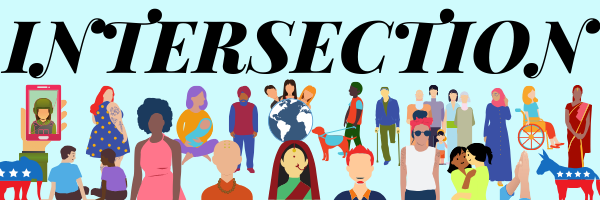
Gillian McGoldrick created Intersection in 2018 to make a space in The Temple News for writers to explore how different identities impacted the experiences of students at Temple University.
“I was always so amazed and I learned so much every week from the Intersection and I’m pleased to see that, that’s like still happening today,” said McGoldrick, a 2019 journalism alumna and 2018 editor-in-chief of the Temple News.
McGoldrick was inspired by Canela López, a former editor-in-chief of the Tulane Hullabaloo, Tulane University’s student newspaper, who started a similar section in 2016, and created Intersection to give stories about identity a home in the paper. For The Temple News’ 100th anniversary, former editors are reflecting on the role they played in shaping Intersection.
Claire Wolters was the first Intersection editor along with co-editor Anaya Duckett-Carter, said Wolters, a 2020 journalism alumna.
As the editor of a brand new section, Wolters was excited by the opportunity to do something different than the other sections at The Temple News but was also intimidated by how new Intersection was, she said.
“There’s a lot of kind of unknown, which means there’s some pressure to like, want to get things right, but not totally know what right looks like, because it hadn’t been there before,” Wolters said. “Overall I think that the section ended up being kind of fun and an outlet for people to explore some of the things that weren’t necessarily, typically in college newspapers.”
During Wolters’ tenure as editor, Intersection covered a range of topics, like the importance of natural hair, Jewish culture and the MeToo movement, she said.
One of the challenges Wolters faced was finding writers to report stories for Intersection because there weren’t any established writers from past semesters, Wolters said. Writers were recruited from journalism classes, student organizations and students who signed up for Temple News email listservs.
Another challenge was assigning writers to articles, Wolters said. Because many stories were about topics that Wolters didn’t have first-hand experience with, she wasn’t always sure who to assign to stories or how to report those articles.
Even with the challenge of being a new section, she felt the work she did mattered, she said. Part of being a reporter is listening to other people’s stories and that was at the core of Intersection for her.
Alesia Bani, a senior journalism major, started out as a freelancer under Wolters before becoming the Intersection co-editor in 2019, she said.
Bani loved freelancing for Intersection and wanted to become more involved with The Temple News, she said. So when the editor position opened up, she applied and became co-editor with Gionna Kinchen.
“It was super fun working with [Kinchen] and being two different people from different backgrounds, different identities among us,” Bani said. “We were able to put our brains together and think of a lot of different things that we could cover on and around campus that Intersection hadn’t done before.”
Bani and Kinchen wanted Intersection to do more reporting on the international community and student organizations, Bani said. She and Kinchen would go on OwlConnect and look up cultural organizations and reach out to them to see if they were doing anything newsworthy.
When she became the Intersection editor in 2020, Nico Cisneros, a senior journalism major, wanted to tell stories about identity that didn’t focus on discrimination, she said. When Cisneros reported an article about hijab fashion, she made an effort to keep the main focus on why students wear the hijab and combine it with their fashion sense.
“The students were so appreciative of that,” Cisneros added. “Having moments like that where, like, the sources text you back after they read the articles, they’re still grateful and they welcomed you into their experience and they saw that you honored it in a way that respected them.”
Making Intersection a collaborative experience was key to Cisneros’s time as editor, she said. Building relationships between The Temple News and different student organizations gave her opportunities to connect with people, like when she covered Diwali and Gaye Holud Day and interviewed students who participated in the celebration and the organizers about the event, who invited her to attend.
In the future, Wolters hopes to see more coverage of topics that empower students, to balance out pieces dealing with serious issues, she said.
“Once you kind of get the heavy stuff out, it’s rewarding and it’s helpful to show the good and that’s more enjoyable to write and more enjoyable to read,” Wolters said.


Be the first to comment